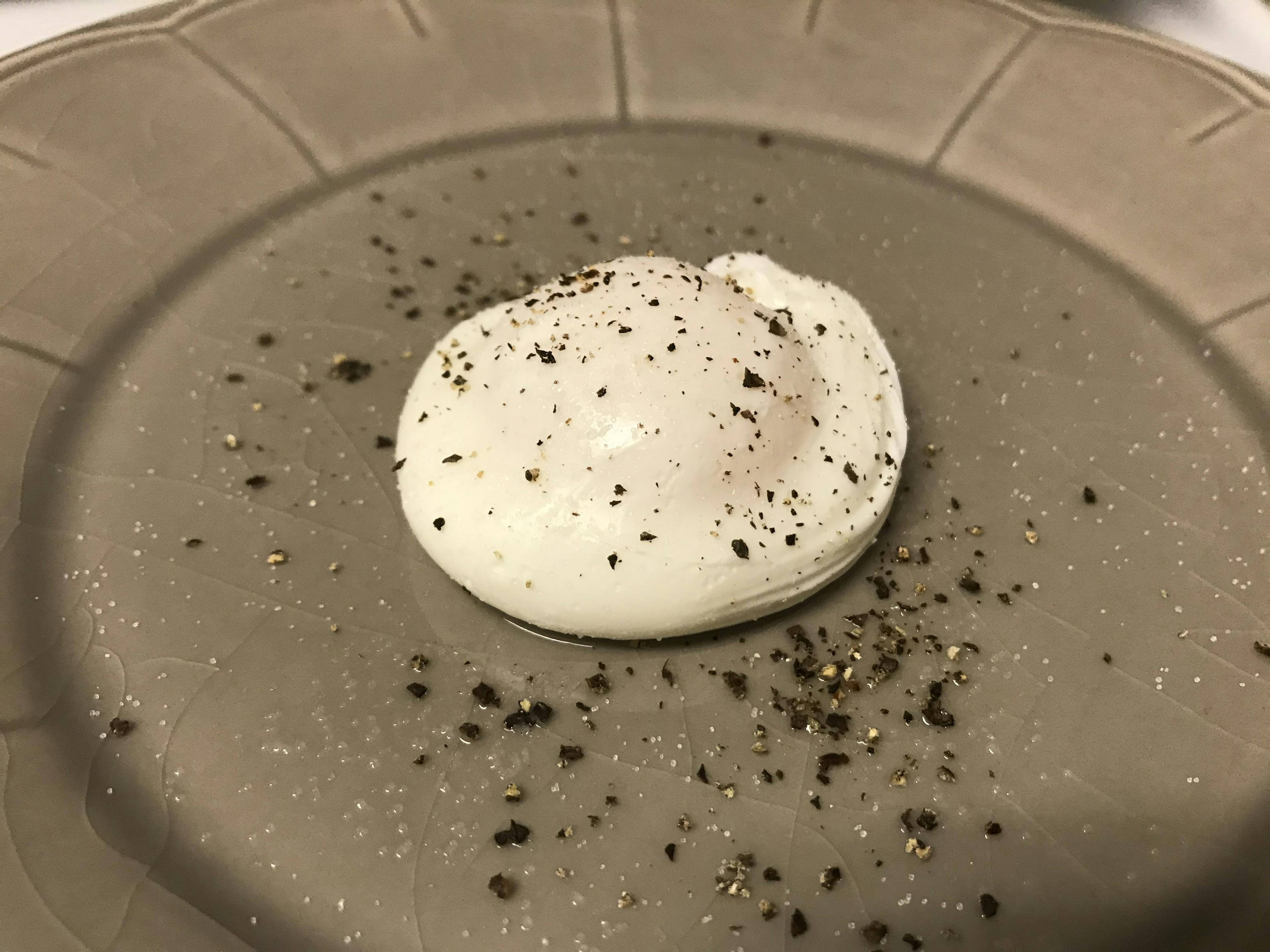Poached Eggs
NOTE: Original images and video not currently displayed.
Ingredients:
- 1 very fresh, large brown egg
- Salt
- Pepper
- White Vinegar
- Water
Tools:
- 1 small bowl
- Large pot
- Chopsticks
Process:
- Using sink, add water for boiling into large pot until water level reaches 2-3 inches.
- Place lid on large pot.
- Using stove, turn heat on high until water is boiling.
- Using stove, turn heat on medium + low.
- Crack one egg into 1 small bowl.
- Add 1 tablespoon of white vinegar into large pot.
- Using chopsticks, create vortex within center of large pot.
- Gently take 1 small bowl containing 1 egg and tip into vortex of pot.
- Set timer for three minutes.
- After three minutes, use spoon in order to take out the egg from the pot and place into a clean bowl.
- Tip out any water from clean bowl.
- Add salt and pepper on top for taste.
Notes:
Updates:
-
December 22nd, 2020: Tried this recipe. Some failures:
-
For the first egg, I disturbed the water after I had put in the egg, which caused the egg white to drift off and go everywhere because I broke the vortex.
-
For the second egg, had heat on too high which caused bubbles and caused the egg to drift away from the bottom of the pot, causing egg white separation from the yolk.
-
For both eggs, did not add white vinegar, which might have caused yolk/egg white to not coagulate properly.
Might want to try smaller pot for less water, and because whirlpoll shoul be in the center of the pot vs. orbiting the center of the pot. Spin water from the edges of the pot in order to make sure vortex is centered within pot.
-
-
January 6th, 2021: Updated the recipe to do the following:
-
Use extremely, extremely fresh eggs. This is the game-changer for poached eggs. I'm talking farm-raised, from the chicken fresh eggs, where the yolk of the egg is orange and not yellow. This Reddit post describes the detail between real fresh eggs, and regular eggs (real-fresh orange on top):
If your eggs aren't that orange, good chance that it won't be a perfect poached egg.
-
Use white vinegar. I got some white vinegar from Trader Joe's, and it's been extremely useful in increasing coagulation. Don't be shy dabbling a good deal of it in, the water will dilute the flavor, and when making multiple eggs, not adding white vinegar for each egg makes subsequent eggs not perfect, so add white vinegar for each egg.
-
Used my smaller, non-stick pot instead of the larger pot, much easier in order to bring water up to a boil and maintain temperature control. I thought having a non-stick pot was a deal-breaker because there wouldn't be room in order to create the vortex or the water level wouldn't be high enough, but those concerns are unwarranted.
If you use a small pot, make sure the water is half an inch to three quarters of an inch below the top of the pot.
-
Purchased a steel strainer from Amazon and filtered out liquidity part of the egg white from the egg. Don't go gentle, just swirl it around the strainer. This is really important because I'm guessing the liquidity part floats more, which does the dragging of the egg white. You want as little liquidity part as possible.
-
Don't use high heat. Instead, heat the water from room temperature to boiling using mid-heat, say 5/8 on the dial so that it's in the middle, then after you drop the egg in, reduce heat to low, 3/8 on the dial, so that the egg does not tumble through bubbles in the water.
Result: I made the perfect poached egg the first time around, I didn't have to trim the egg after the fact or anything! Later eggs were imperfect. Pictures below:
-
-
January 13th, 2020: Update the recipe with following notes:
-
Consider blasting eggs with heat right when they're added to the pot, to assist with quick coagulation.
-
Consider flipping eggs in two strainers in order to remove the liquidity stuff at the very top. If the eggs are fresh.
-
Use two spoons in order to drain eggs of water.
-
Don't swirl eggs too much in the strainer, otherwise yolk will separate from whites in the ramekin and not attach properly in the pot.
-
